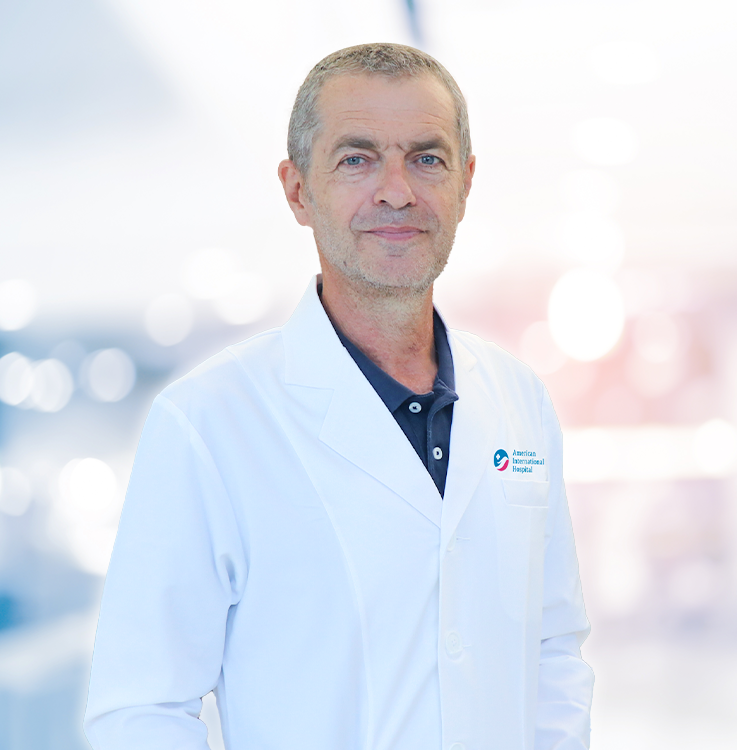Thông báo
Vui lòng điền vào thông tin bên dưới
Khẩn cấp
Kidney stones: Which treatments to choose from?
Kidney stones often form silently without causing any symptoms and are discovered only by chance when patients go for health check-ups or have long-lasting back and hip pain. Kidney stones can lead to infection or kidney failure.
How do stones form?
Kidney stones are made up of dissolved substances found in the urine. Stones often form when the urine becomes concentrated, allowing minerals to crystallize and stick together. Approximately 10 – 15% of Vietnamese population gets kidney stones. The majority of cases occur in people after 40 years of age.
Who is at risk?
Kidney stones often have no definite cause, but there are factors that increase your risk of developing kidney stones including:
- Dehydration: Not drinking enough water or sweating a lot can increase the risk of getting kidney stones. When there is less water in the urine, the water is not able to dissolve as many mineral salts.
- Diet: Following a diet high in protein and salt increases your risk of kidney stones.
- Having medical conditions: Having intestinal diseases e.g. chronic diarrhea or having had intestinal surgery can affect the absorption of fluids and minerals such as calcium, phosphorus; another condition called renal tubular acidosis can cause calcium deposition in the kidney; other conditions such as gout, abnormalities in the urinary tract, etc. can also increase the risk of developing kidney stones.
- Recurrent urinary tract infections: Some bacteria make the urine less acidic and more alkaline. Struvite (magnesium ammonium phosphate) stones form in alkaline urine. These stones are often large, with branches and grow very quickly.
Signs and symptoms of kidney stones
Symptoms of kidney stones can be divided into 3 main groups:
- No symptoms: Many people have kidney stones that bring no symptoms and are discovered only by chance when they go for health check-ups. 95% of cases with kidney stones are detected through ultrasound. Symptoms are normally less related to the size of stones. Small stones often go unnoticed unless they travel through the ureter. Larger stones in the renal pelvis or renal calyces can cause sharp pain in one side of the back.
- Pain in one side of the back: In some cases, stones leave the kidney and travel to the bladder through the ureter. Stones can become lodged in the ureter, blocking the flow of urine out of the kidney, then making the kidney to swell and causing a lot of pain spreading from the back to the lower abdomen. In addition, patients can also experience nausea or vomiting.
If the size of stones is less than 5 mm, over the time they can be flushed out of the urinary tract. In case stones are stuck for too long in the ureter, severe blockage and hydronephrosis can lead to reduced kidney function.
- Infection: Infection is a common complication in patients with kidney stones. Patients can experience some symptoms such as chills with fever, pain in the back and side, frequent urination, painful urination, hematuria. Infection is a severe complication, patients need to go to a medical facility for treatment as soon as possible when having it.
Treatment of kidney stones
There are currently many methods of treatment for kidney stones. For small and asymptomatic stones, patients may just need to drink a lot of water, adjust the diet or take medicine. For large stones or in cases of complications, additional treatment may be necessary.
Diet adjustment: If you have small kidney stones that cause no symptoms, you just need to adjust the diet by limiting foods high in protein and salt, eating more fruits and vegetables, and especially, drinking much water to help push the stones through your urinary tract.
Extracorporeal shock wave lithotripsy (ESWL): This is a common non-invasive procedure for treating kidney stones. Patients can go home the same day as the procedure. This treatment uses shock waves to break kidney stones into small pieces. These small pieces can then pass through the urinary tract easily and out of the body with the urine. However, this procedure is recommended only for stones less than 2 cm in size. Larger stones require multiple times of lithotripsy and broken stones dropping from the kidney may block the urinary tract.
Ureteroscopy (URS): URS involves passing a very small telescope, called an ureteroscope, into the bladder, up to the ureter and into the kidney. The ureteroscope helps the urologist see the stones without an incision. General anesthesia can keep patients comfortable during the procedure. Once the urologist sees the stone, a small and basket-like device grabs smaller stones and removes them. If a stone is too large to remove in one piece, it can be broken into smaller pieces by laser.
Percutaneous nephrolithotomy (PCNL): PCNL is a trendy minimally invasive procedure that is best for removing large stones in the kidney. A nephroscope is passed into the kidney through an approximately 8 mm skin incision to directly visualize the stones. Then stones are broken into small pieces using a laser lithotripsy device.
American International Hospital (AIH) is equipped with soft ureteroscopic tube for removing stones without an incision and latest Mini-PCNL device that can produce very small incision (about 3 – 4 mm) for removing stones with laser. This is a high technique to effectively treat kidney stones that can replace open surgery, bring less pain, less bleeding, faster recovery and maximum protection of kidney functions. Patients may stay in the hospital for 2 – 3 days after the procedure.
How to prevent kidney stones to recur?
To prevent the recurrence of kidney stones, after the procedure stones pieces need to be collected and sent to the laboratory for analysis of their constitutions and what causes them. Additional blood and urine tests are also conducted. Based on the outcomes of above analysis and tests, doctors will develop a proper preventative plan for patients.
Importantly, patients need to make positive lifestyle and diet changes by limiting foods high in salt and protein, eating plenty of fruits and vegetables and consuming a sufficient amount of calcium. Patients should drink 2.5 – 3 litres of water a day to keep the urine clear and prevent kidney stones.
Although urine color cannot determine if you are having kidney stones or not, it can help you know whether you are staying hydrated. A pale yellow proves that you drink enough water. For those who are dehydrated or consume less water, the urine color falls on darker yellow/dark amber.
Nguyen Tan Cuong, MD. MSc.
Urologist, Deputy Head of General Surgery Department, American International Hospital (AIH)




























































Để lại bình luận